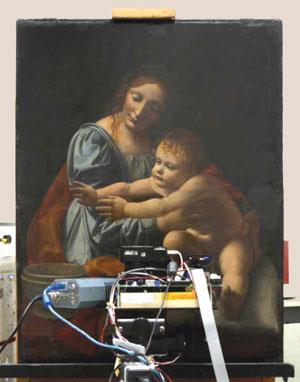10 years ago in Chemistry in Britain
10 years ago in Chemistry in Britain
Peter Vandenabeele of the University of Ghent, Belgium, and colleagues at the Catholic University of Leuven, Belgium, and the Institute for Chemical and Applied Spectroscopy in Dortmund, Germany, have examined the Breviarium Mayer van den Bergh, an illuminated manuscript made in Flanders around 1500AD, using a combination of micro-Raman spectroscopy and total reflection x-ray fluorescence (XRF) spectroscopy.

The team identified several pigments. Azurite, a copper complex, and lapis lazuli were used for blue. Vermilion provided the red, red lead and massicot (two lead oxides) were orange, while green was formed from copper sulfates and malachite (copper carbonate-hydroxide).
The results, when compared with those from attributed works, identified Jan Provoost as one of the artists involved.
Digest on a news item in Chemistry in Britain (May 1999), based on a paper published in Analyst, 1999, 124, 169.
Ed. XRF is a non-invasive technique still widely used in the art world. For example synchrotron radiation-induced XRF allowed Joris Dik and colleagues at Delft University of Technology, the Netherlands, to recreate a hidden portrait of a peasant woman underneath the van Gogh painting Grasgond (1887) (see Chemistry World, September 2008, p4). Also the Californian company InXitu, together with the Getty Conservation Institute, have developed a portable XRD (x-ray diffraction)-XRF instrument (based on NASA technology) which has been used in the study of many works of art (G Chiari, Nature, 2008, 453, 159).












No comments yet